Scientist of the Day - Abbé Reginald Outhier
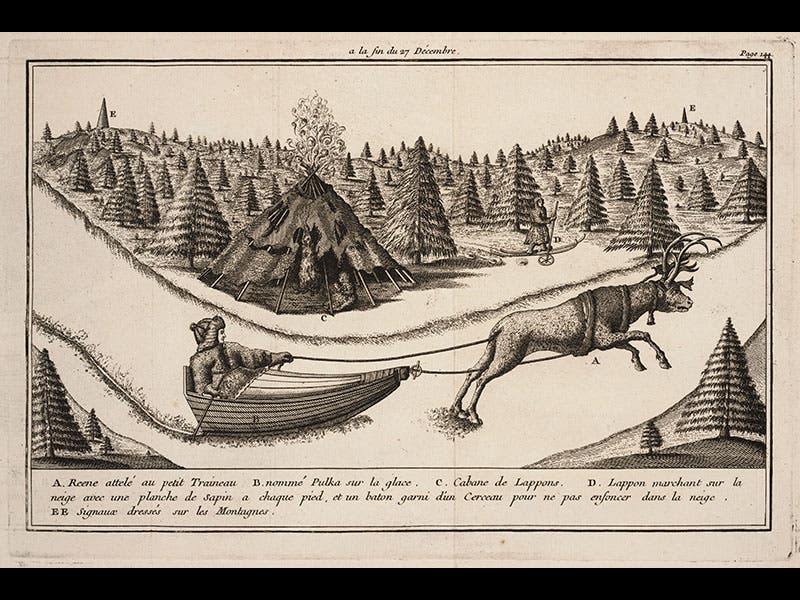
Linda Hall Library

Linda Hall Library
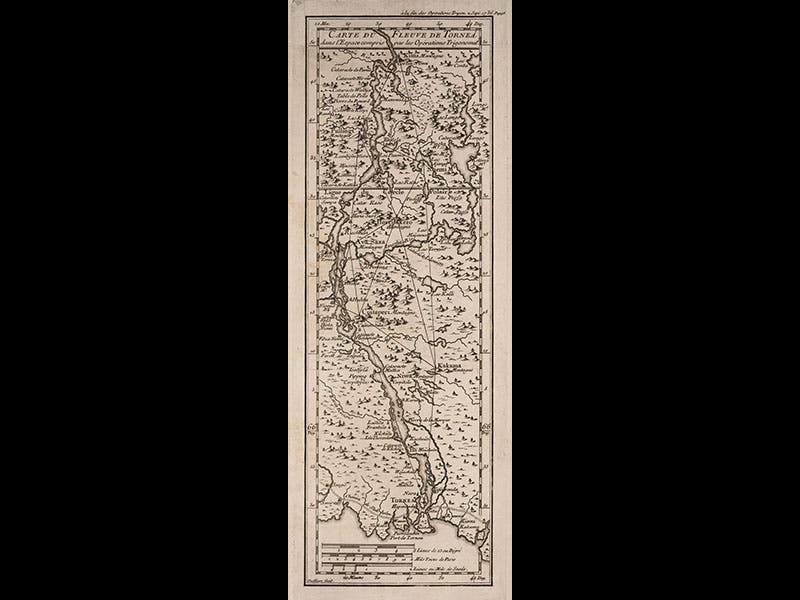
Linda Hall Library
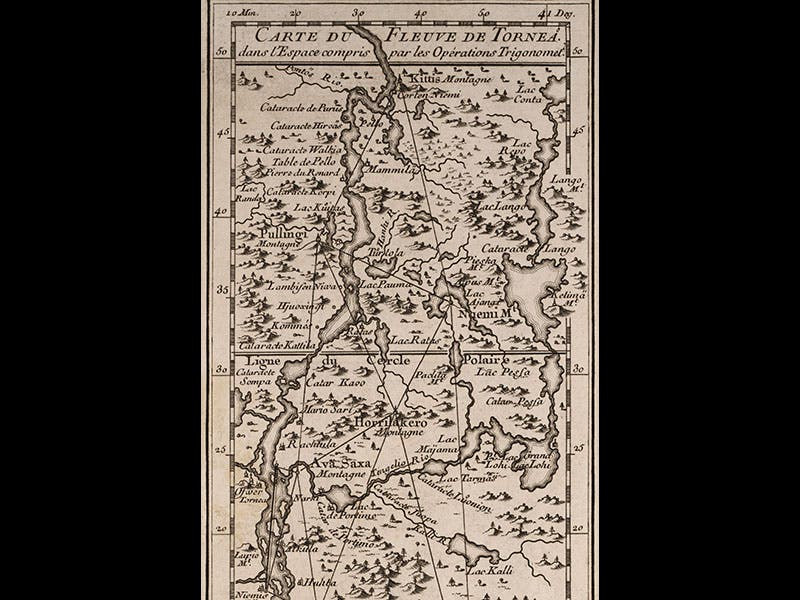
Linda Hall Library

Linda Hall Library
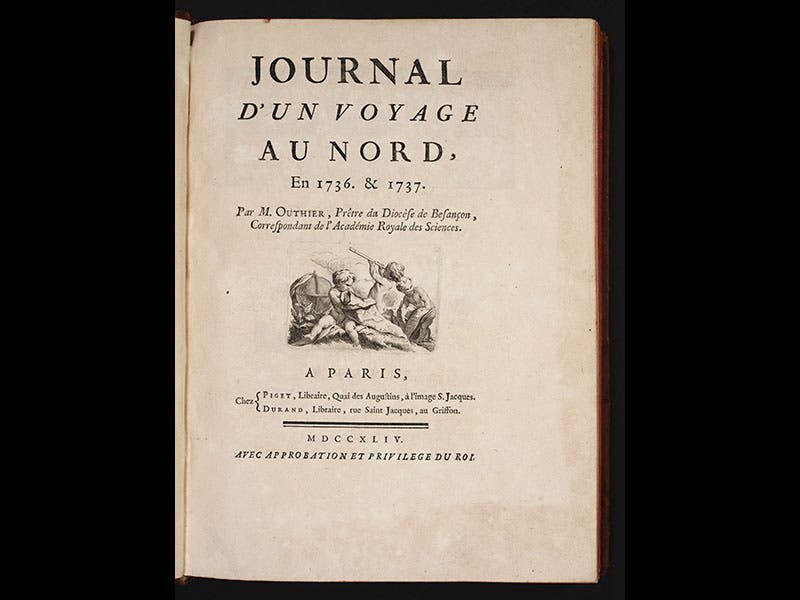
Linda Hall Library
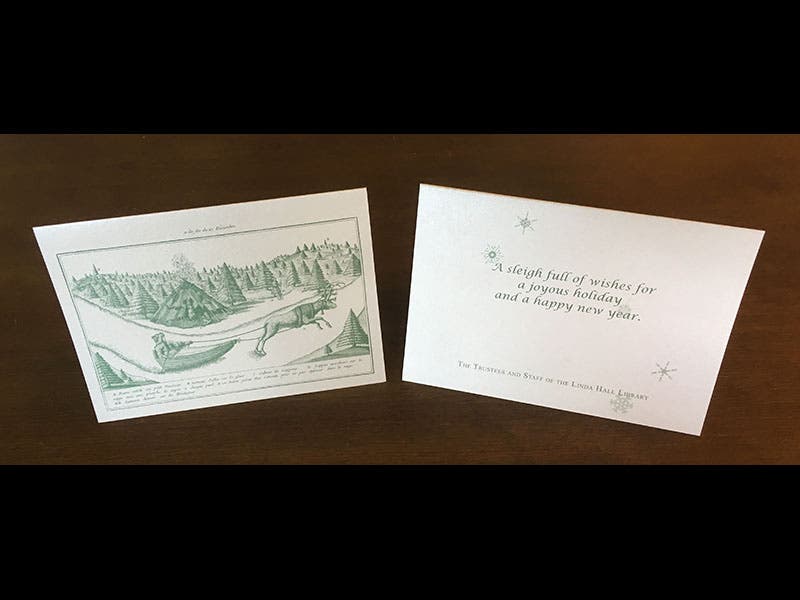
Linda Hall Library
Abbé Réginald Outhier, a French cleric, was born Aug. 16, 1694. Outhier was not only a man of the cloth, but an accomplished surveyor and astronomer, and he was selected to accompany Pierre de Maupertuis and a small group of French scientists on a journey to Lapland in 1736. Their mission was to measure precisely a degree of latitude in this northern country, as a counterpart to a similar expedition that was making the same series of measurements in Ecuador. It was hoped that by comparing the length of a degree on the equator to one near the Arctic circle, one could determine whether the earth is spherical, oblate (squashed at the poles, like an onion), or prolate (elongated at the poles, like a lemon).
The party journeyed by boat up to Tornea (now Tornio), at the top of the Gulf of Bothnia (see map, second image), and then they triangulated themselves north for 70 miles or so. They started at the steeple of the church in Tornea and proceeded to erect a series of signal towers on high points that they could observe from the steeple. By laying off an exact baseline with a chain, and then making precise angular measurements of the signal towers, they were able to construct a series of triangles northward from Tornea, as shown on the second map (third image). A detail of the top half of the map (fourth image) shows some of the laid-out triangles. A separate view of Tornea provides the layout of the town and the position of point zero, the church (fifth image). Several of the signal points are also indicated on this view. Calculations later would reveal that a degree in Lapland is longer than a degree at the equator, so the earth must be oblate, as Isaac Newton had first argued.
Outhier's primary task was spiritual guidance, with occasional surveying duties. But Outhier was also a budding ethnologist, and he made detailed observations of the Lapps (we would now call them Sami) who lived in the bleak area under surveyance (a region we now call Meänmaa). Outhier was very impressed that the Sami could survive in such hostile conditions. Without the reindeer, Outhier noted, they would be lost, since the reindeer provides them with everything, and in turn needs only lichen to survive. The worse feature of life above the Arctic circle, in Outhier's opinion, were the flies, which surrounded you like a black cloud the instant you stopped moving, and bit ferociously. In the southern part of the surveyed region, inhabited by Swedes rather than Sami, the Frenchmen saw and experienced their first saunas, and they marveled that one could go from steam-heated rooms to the frigid outdoors without experiencing the least discomfort.
Outhier published all his observations in a narrative, Journal d'un voyage au nord, en 1736. & 1737 (1744; sixth image). It has a number of large folding engravings, including one that depicts a reindeer pulling a pulkka, with a Sami tent and a Sami on skis in the background (first image). We were so impressed by this illustration, when we acquired Outhier's book in 2010, that we used it for the front of the Library's holiday card that very year (seventh image).
Dr. William B. Ashworth, Jr., Consultant for the History of Science, Linda Hall Library and Associate Professor, Department of History, University of Missouri-Kansas City. Comments or corrections are welcome; please direct to ashworthw@umkc.edu.




![Using an astrolabe to measure the depth of a well, woodcut in Elucidatio fabricae vsusq[ue] astrolabii, by Johannes Stöffler, 1513 (Linda Hall Library)](https://assets-us-01.kc-usercontent.com:443/9dd25524-761a-000d-d79f-86a5086d4774/a998eb50-55d2-4a88-ace2-a50aa5fa86e7/Stoffler%201.jpg?w=210&h=210&auto=format&fit=crop)

